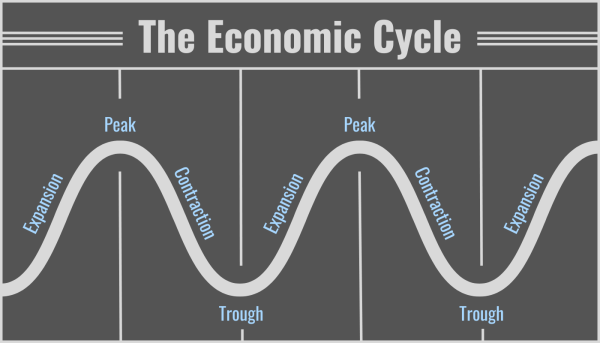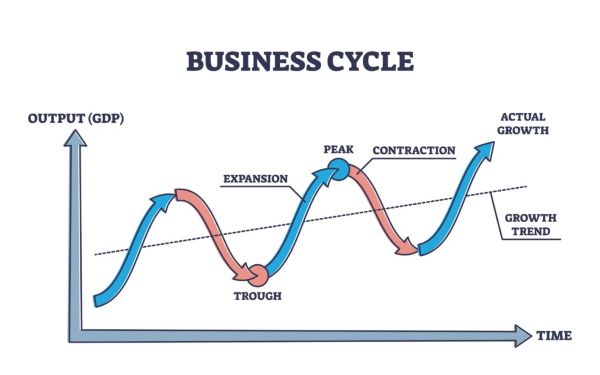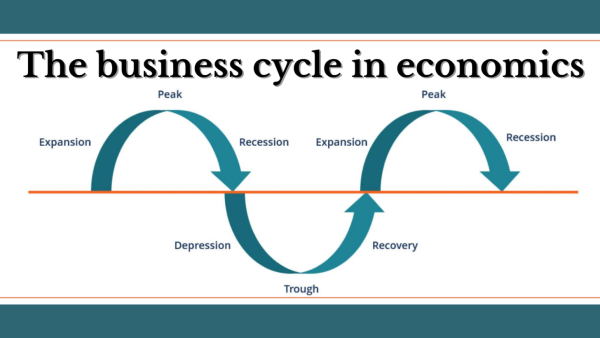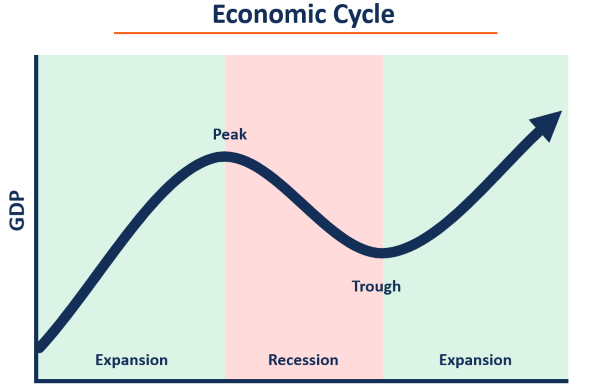The economic cycle, a fundamental concept in economics, elucidates the cyclical nature of economic activity, characterized by alternating periods of expansion and contraction. In this in-depth exploration, we unravel the intricacies of the economic cycle, delineating its key phases, drivers, and ramifications on businesses, consumers, and policymakers alike. From the boom of prosperity to the bust of recession, understanding the economic cycle is essential for navigating the complex terrain of the global economy.
Deciphering the Economic Cycle: An Overview

The economic cycle, also known as the business cycle, encapsulates the recurrent pattern of fluctuations in economic activity over time. It comprises four primary phases: expansion, peak, contraction, and trough. These phases reflect the ebb and flow of economic growth, employment levels, and overall prosperity within an economy. The economic cycle is driven by a myriad of factors, including consumer spending, business investment, government policies, and global economic trends.
Phases of the Economic Cycle

- Expansion: During the expansion phase, economic activity surges, characterized by robust GDP growth, rising employment levels, and increasing consumer confidence. Business investment expands, and consumer spending flourishes, fueling a virtuous cycle of economic prosperity. The expansion phase is marked by heightened business optimism, buoyant financial markets, and expanding credit availability.
- Peak: The peak represents the zenith of the economic cycle, signaling the culmination of a period of sustained growth. At the peak, economic indicators reach their highest levels, and the economy operates at or near full capacity. However, as the economy approaches the peak, signs of overheating may emerge, such as inflationary pressures, asset bubbles, and tightening labor markets.
- Contraction: Following the peak, the economy enters a phase of contraction, characterized by a slowdown in economic activity and declining growth rates. Business investment contracts, consumer spending moderates, and unemployment may begin to rise. The contraction phase is often precipitated by factors such as tightening monetary policy, waning consumer confidence, or external shocks to the economy.
- Trough: The trough represents the nadir of the economic cycle, marking the lowest point of economic activity before the onset of recovery. During the trough, economic indicators reach their lowest levels, and the economy operates below its potential. However, the trough also signifies the beginning of a new cycle, as economic conditions gradually improve, laying the foundation for a period of recovery and expansion.
Implications of the Economic Cycle

The economic cycle exerts profound implications for businesses, consumers, and policymakers alike. For businesses, navigating the economic cycle requires adept strategic planning, risk management, and flexibility to adapt to changing market conditions. Consumer sentiment and spending behavior are influenced by the economic cycle, with confidence and purchasing power fluctuating in response to economic conditions. Policymakers employ fiscal and monetary measures to stabilize the economy and mitigate the adverse effects of economic downturns, aiming to promote sustainable growth and stability over the long term.
Managing Risks and Opportunities

In an era of heightened economic uncertainty and volatility, understanding the economic cycle is essential for managing risks and seizing opportunities. Businesses must anticipate and prepare for cyclical fluctuations in demand, employment, and profitability, implementing strategies to mitigate downside risks and capitalize on emerging trends. Consumers and investors, likewise, must remain vigilant and informed, adapting their financial decisions to navigate the ebbs and flows of the economic cycle.
In conclusion, the economic cycle embodies the dynamic rhythm of economic activity, punctuated by periods of expansion, peak, contraction, and trough. By comprehending the nuances of the economic cycle and its impact on various stakeholders, individuals and organizations can make informed decisions, manage risks, and position themselves for success in an ever-evolving economic landscape.